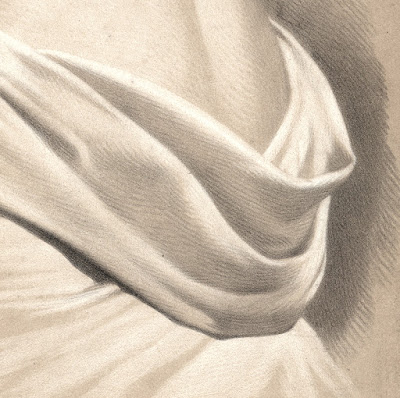Abraham Genoels (aka Archimedes; Abraham II Genoels; Abraham
Genoel; A.G.) (1640–1723)
“Le Pays Stérile”
[Barren Countryside] (1675–1691), from a series of six landscapes published by Adam
François van der Meulen (1632–90)
Etching on fine
laid paper trimmed within the platemarks, but showing some of the lettered
publication details
Size: (sheet)
13 x 15.5 cm
Lifetime
impression (?); state ii (of ii)
Lettered in the
lower margin (partly trimmed): "A. Genoels fe." and "V.Meulen,
ex. Cum privilegio Reg."
The British
Museum offers the following description of this print:
“Landscape with
cascading river in the centre, trees to the right, rocks and mountains in the
background; from a series of six prints showing landscapes” (http://www.britishmuseum.org/research/collection_online/collection_object_details.aspx?objectId=1667513&partId=1&searchText=Genoels+meulen&page=1)
Regnault-Delalande
1817 149.33; Weigel 1843 211.33.II; Hollstein 33.II; Bartsch 5.33 (4.345), p,
322
Condition:
strong and well-inked impression trimmed close to the margin line. The sheet is
in excellent condition apart from very faint traces of red lines that are
virtually invisible to the naked eye. Verso has surface sheen from traces of glue.
I am selling
this very rare old master etching from the 17th century for a total
cost of AU$159 (currently US$117.96/EUR106.71/GBP88.12 at the time of posting
this print) including postage and handling to anywhere in the world.
If you are
interested in purchasing this etching exemplifying the principles of classical
landscape drawing, please contact me (oz_jim@printsandprinciples.com) and I
will send you a PayPal invoice to make the payment easy.
This print has been sold
Although this finely
executed etching by Genoels displays many of the attributes associated with
classical landscape composition—especially the arrangement of trees and rocks
on the left and right sides framing a view into the far distance following the
course of a stream—what puzzles me about such an image by a Flemish master is
that the countryside that he portrays is not part of his home region.
From my recent
experience of seeing the city and surroundings of Antwerp, where Genoels was born,
trained and died, the countryside does not have the Alpine peaks that he
represents, even if there seems to be an abundance of streams. No doubt Genoels
travelled far beyond Antwerp and may have ventured into rugged terrain similar to
which he has drawn, but I suspect that the images that he found most pleasure
in portraying were those that he was not accustomed. In short, like most
artists, he drew everything that he was not.


















































